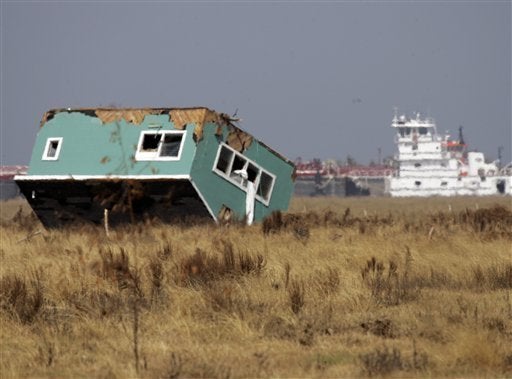
New Orleans.
Say it slowly. Savor, as you would the first glimpse of spring. Find, incongruous, that notion of springtime intermingled with what you remember last. A drowning city, an inexplicable response, an impossibly heart-rending affair best relegated to a cordoned-off section of a sorrow-laden mind.
Remember that, as your New Orleans. It's how I remember mine. It's why I've yet to write of America's Mississippi River jewel. But that's about to change. Because unnoticed, away from media eyes, between Katrina's somber anniversaries, Mardi Gras' revelry, and Jazzfest's musical interludes, Springtime has come to New Orleans.
I know. It's hard to believe. We've had it drummed into our heads, over and over again. Those poor people. That tragic city. The levees, the water, the Superdome. FEMA. But while we haven't been watching, New Orleans has been working. And now, just as the first signs of spring are shoots of green, pushing through newly-thawed earth, the signs of New Orleans' rebirth are there, if only we care to look.
As of January 31, 2009, 72 recovery projects have been completed. Walking paths at Joe Brown Park and St. Roch. The West Riverside Overlay. The Wisner Bike Path. The District Court Building. 72 projects that most of us have never heard of. That doesn't even include the 111 projects under construction. A total of 183 projects under construction or complete. Yes, one-hundred-and-eighty-three. Say it slowly, and savor that.
For the better part of the past three-and-a-half years, making progress, measurable or not, has been a struggle for the City. In many ways, it still is. But by that we shouldn't be surprised. Nearly 80 percent of the City was submerged, the institutions of government, and daily life, swept away. We all bemoaned New Orleans' fate. We cursed our government for its inability to respond in a way befitting the best traditions of American leadership.
We wanted LBJ after Hurricane Betsy. The president whom, according to media reports from 1965, flew to New Orleans, even as the storm was lashing Baton Rouge, toured the city and when, "[t]here was no electricity... so that people could see and hear him at one shelter... took a flashlight, shined it into his face and said into a megaphone, 'My name is Lyndon Baines Johnson. I am your president. I am here to make sure you have the help you need.'"
Nothing of the sort happened after Katrina. We know that. But somehow, after the water receded, and after federal help had arrived or been pledged, we started to wonder, "What's taking New Orleans so long?" We expected, because this is America, that the problem would be solved. Today, tomorrow, or at the very latest, by the end of that very year! But New Orleans has always been a ten-year story, at least.
Kobe, Japan is the closest parable we have. A massive earthquake, in 1995, destroyed roughly 80 percent of the city. Similar populations, similar demographics, similar infrastructures, and a ten-year recovery. We don't remember, because Kobe to us, today, is simply the place where the best (or most expensive) steaks on earth are raised.
So we forgot, or ignored, the lessons of Kobe. But New Orleans, the magical, mystical, confusing, and confounding city refused to die. For every public misstep, there's been unspoken progress. For each trial, an unreported triumph.
Did you know that New Orleans is one of just 13 Department of Energy Solar Cities? Or that it's the future home of a joint VA-LSU teaching hospital? One that may well teach us how to drive down the cost of healthcare, nationwide? Did you know that New Orleans is leading the movement toward public charter schools? Or that breakthroughs in clean energy may shortly be coming from its shores? You can't name a social issue we face that won't find some of its solution in the rebirth of New Orleans.
And that's the way it should be.
For all the pain associated with the Crescent City, for everything that's gone wrong, it has dug in its heels, set a course, and doggedly refused to give up, even when it's gotten in its own way. It's not perfect. Far from it. But it's making progress. Whether we've been paying attention or not.
Those 183 projects are set to be joined by 447 more. takepart and visit the City's website, click on "Track Our Progress" and look around. Look at the Google Map of recovery sites, sprouting around the City. Read the January report, or just search within it for the word "complete." And feel a smile spread slowly across your face.
Because this City, which has given us Louis Armstrong and Paul Prudhomme, the paddlewheel steamboat, the Battle of New Orleans, and 25 percent of our nation's oil and gas; the worst of our past and the hope of our future, is giving us something else: an unexpected springtime.
Savor that. And make sure that springtime visits earlier, the next city that cries out for our help.
Originally posted on TakePart.com.